Biological characteristics, spatial ecology and population structure of the reef manta rays (Mobula alfredi) of New Caledonia
2018 - 2021
Dr. Hugo Lassauce
Keywords: Site Fidelity • Spatial Connectivity • Photo-identification • Injuries • Population Size • Tagging • Home Range • Habitat Use • Movement Patterns • Diving Profile • Deep Diving • Genetic Diversity • Population Structure • Management • Conservation • Genomewide SNPs
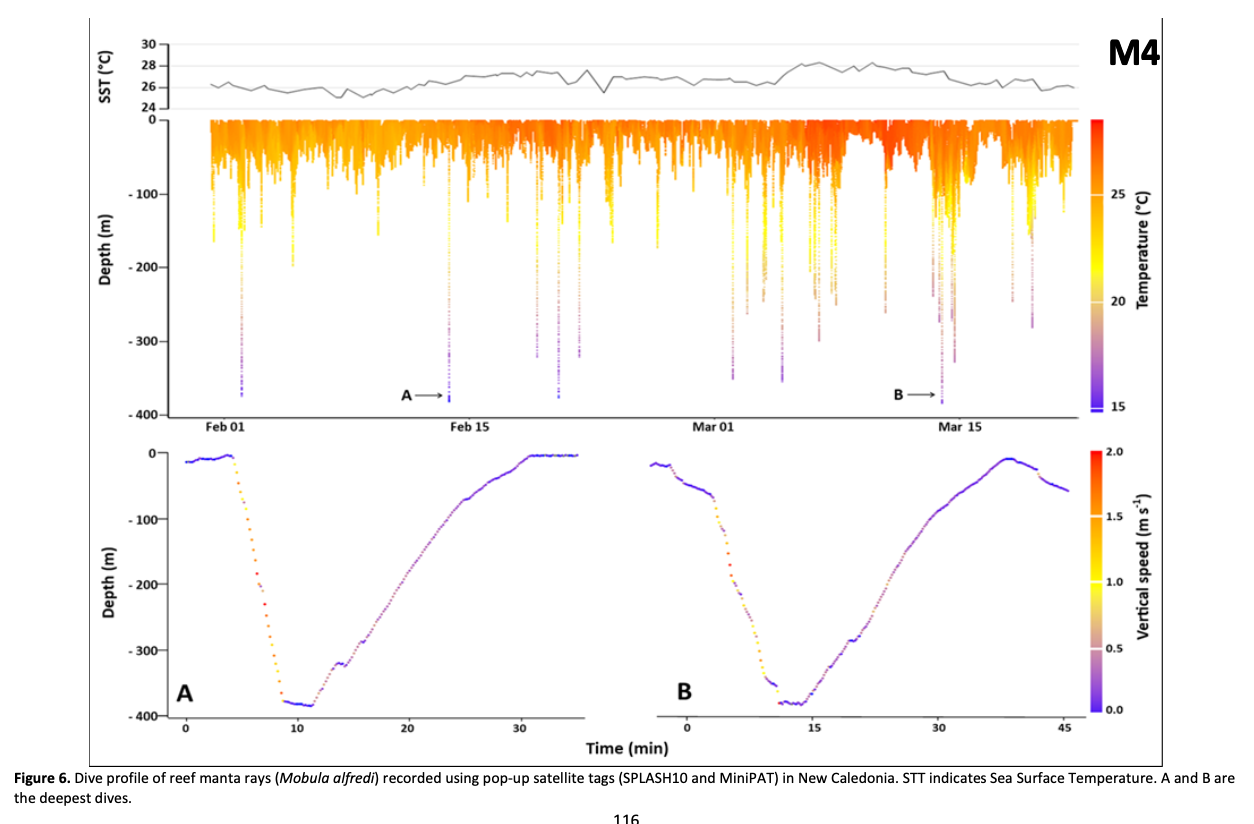
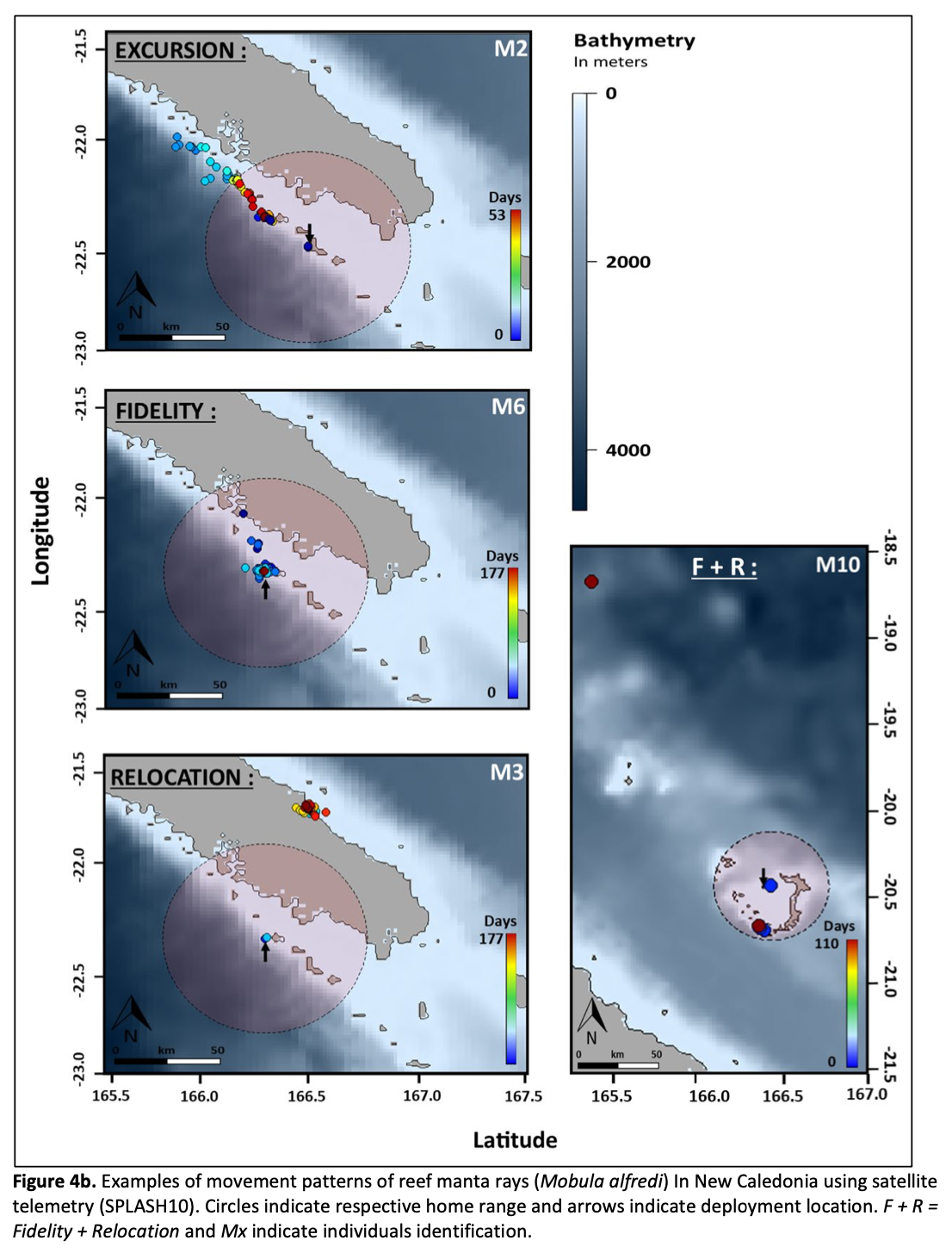
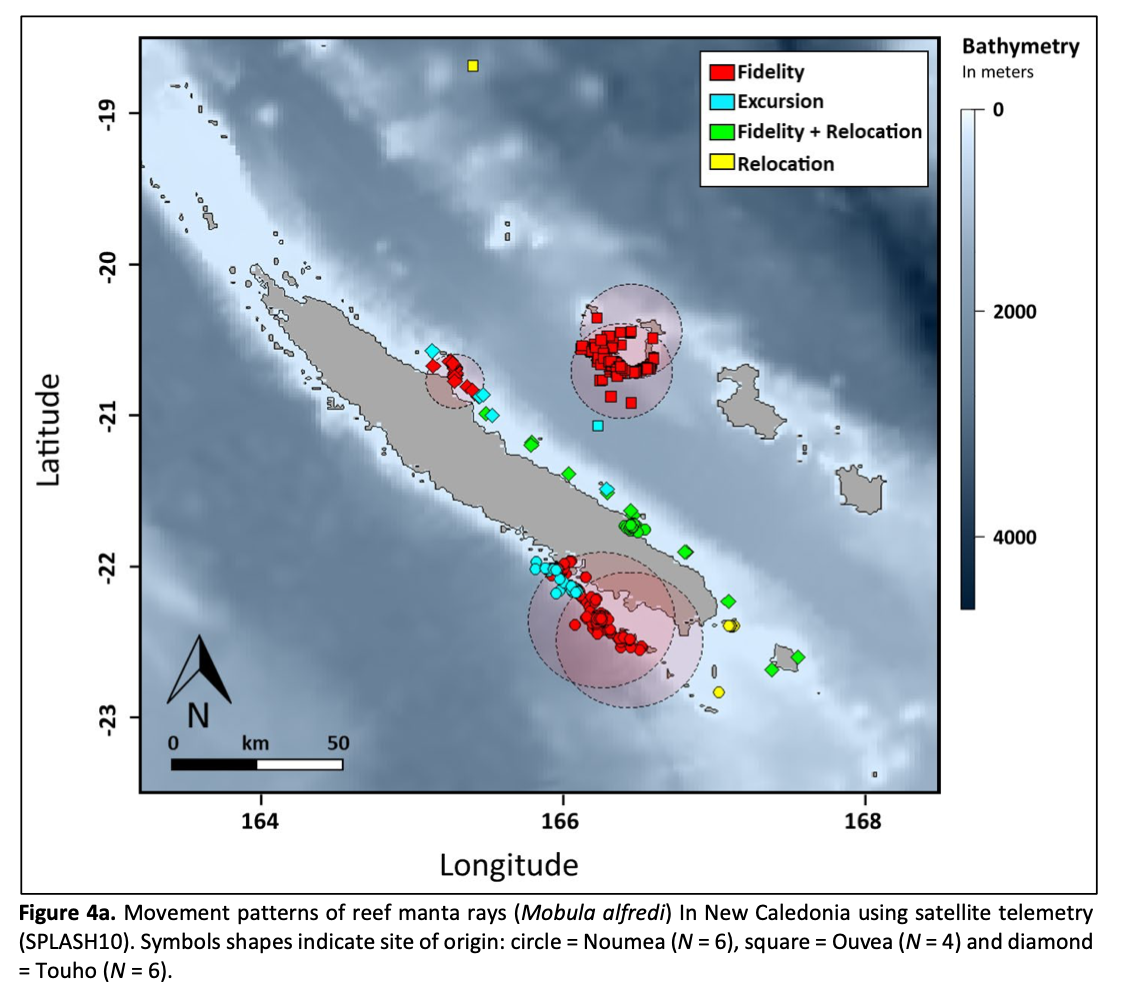
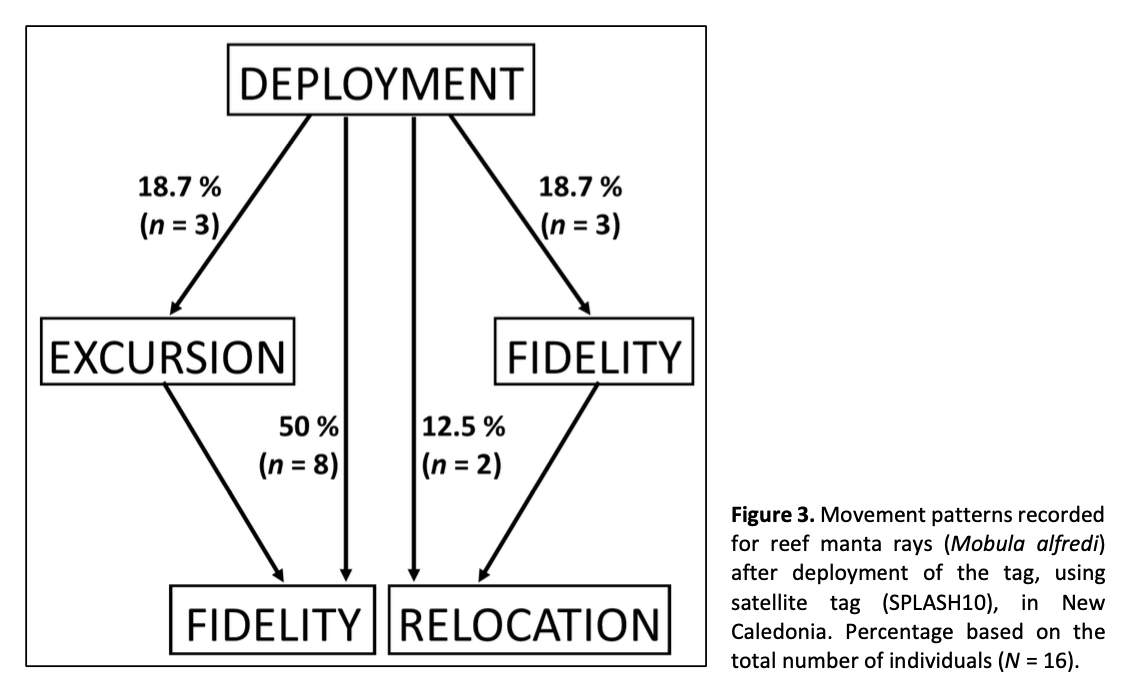
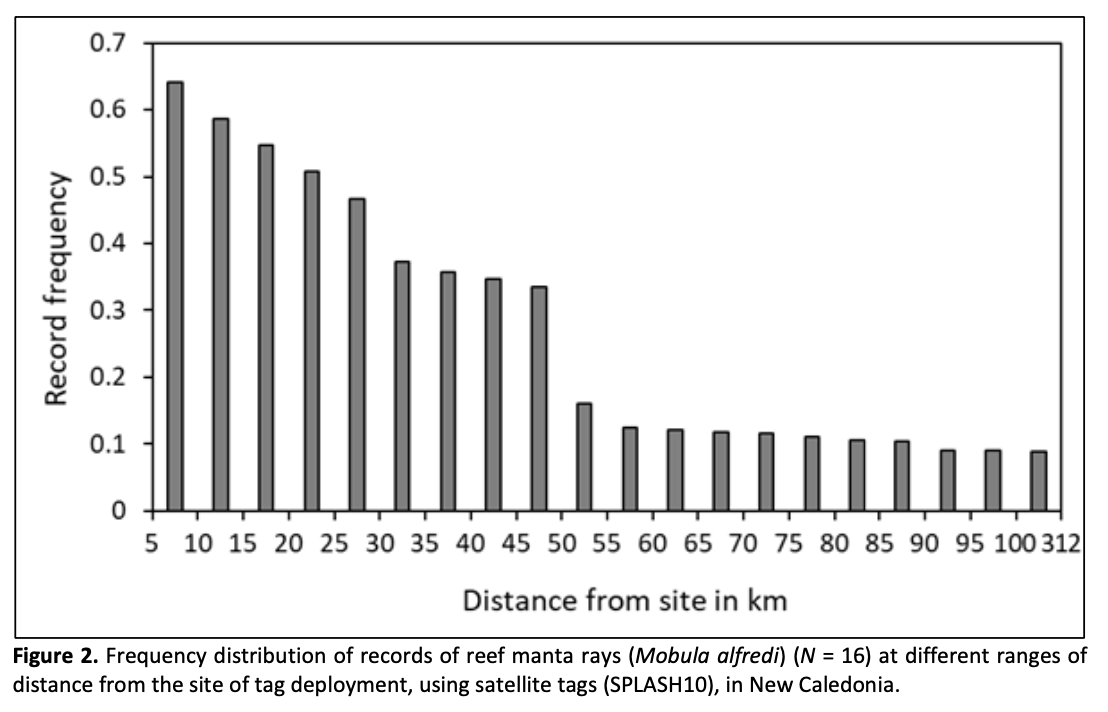

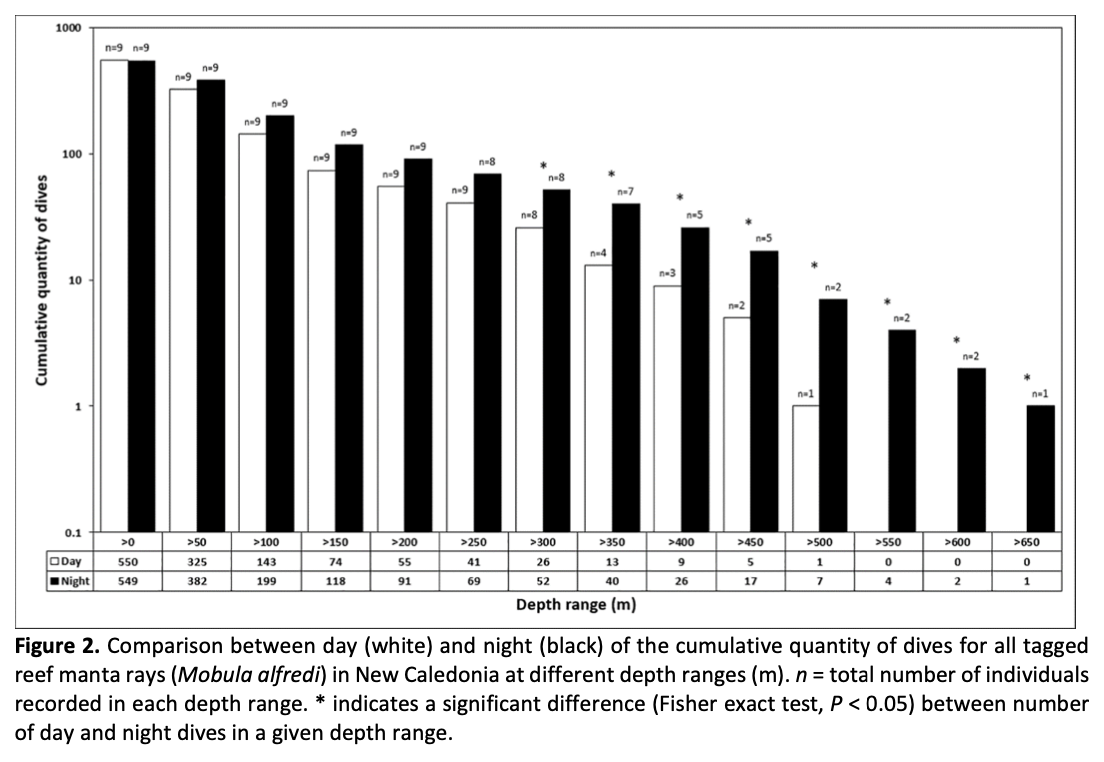
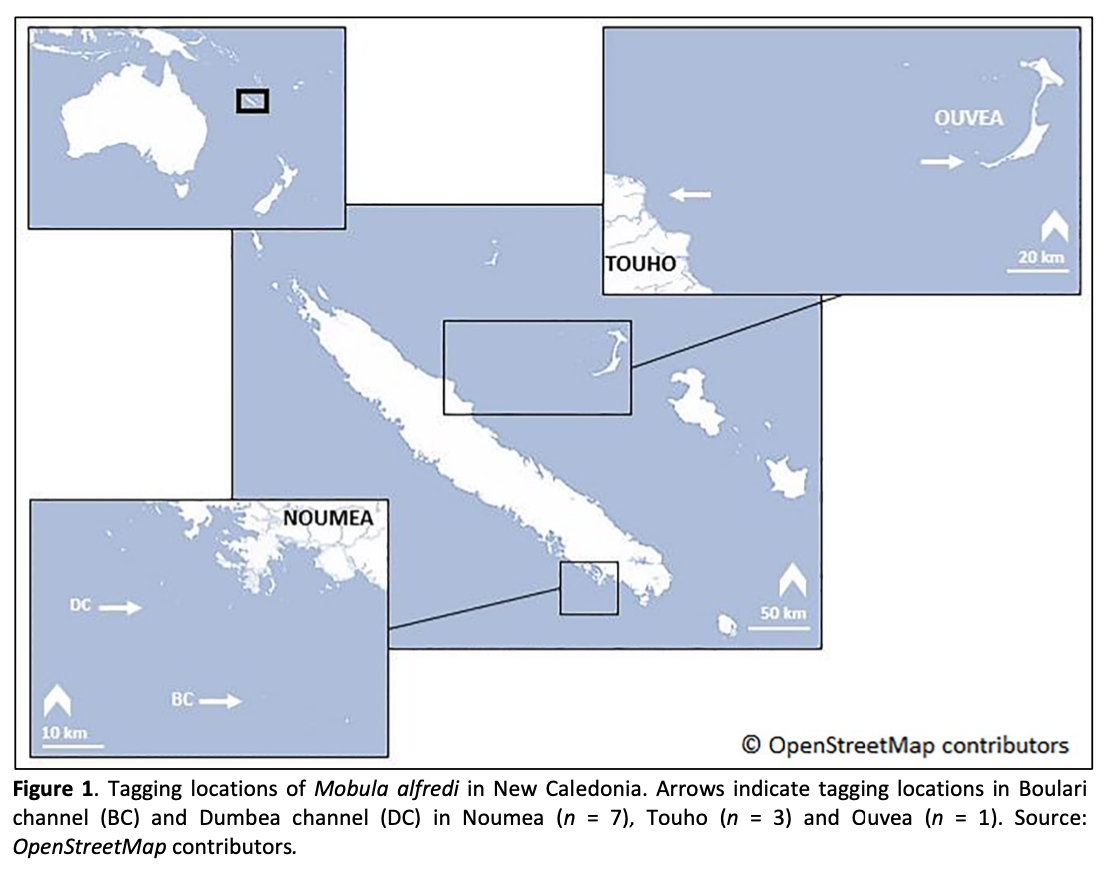



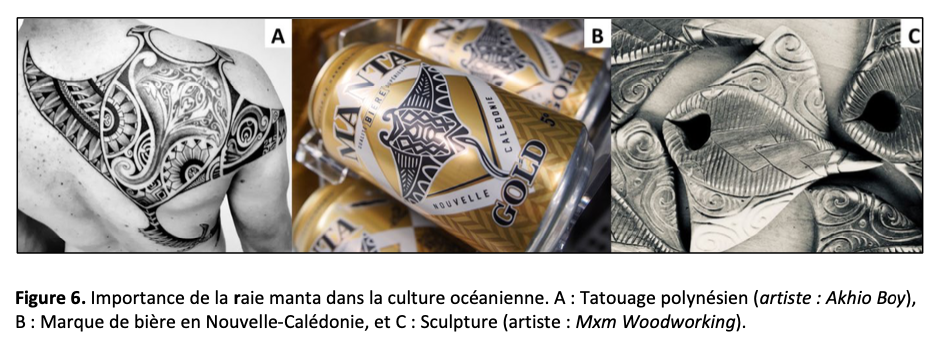
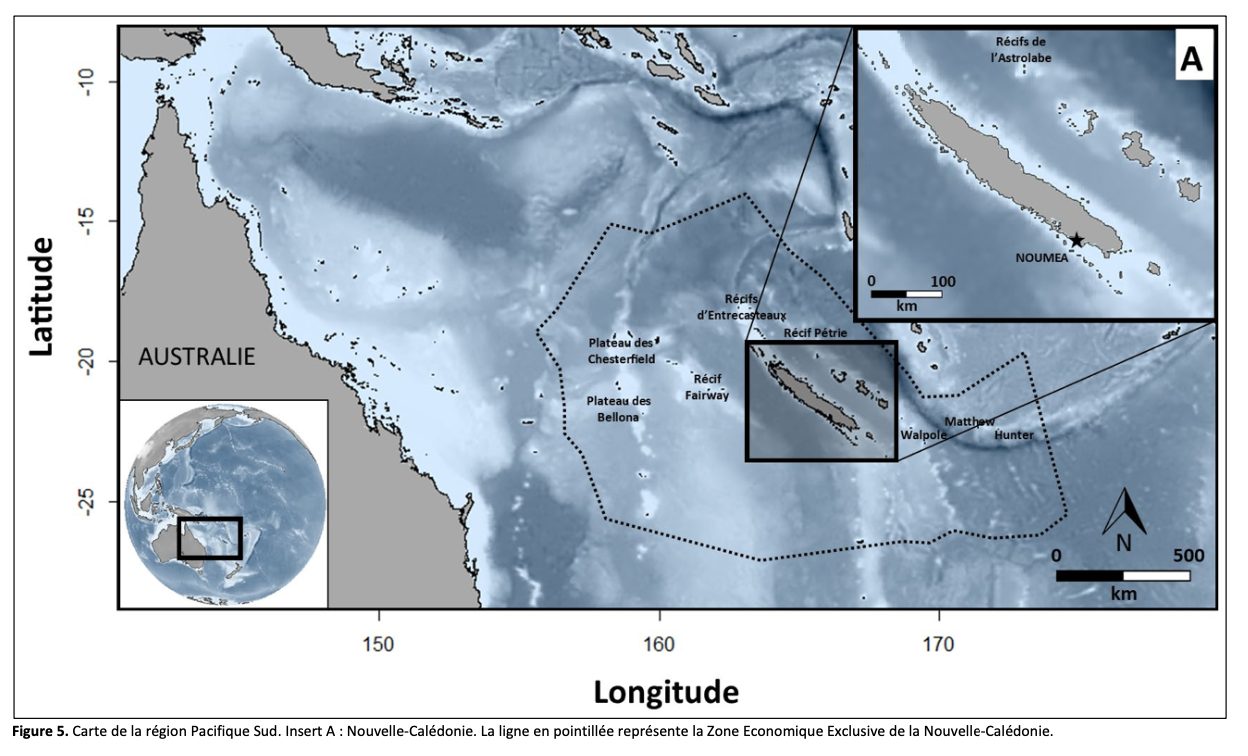
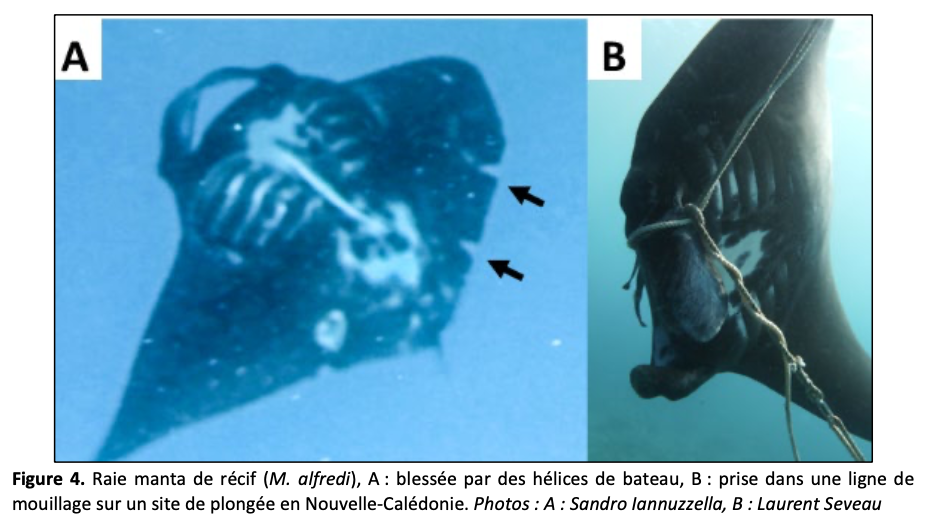
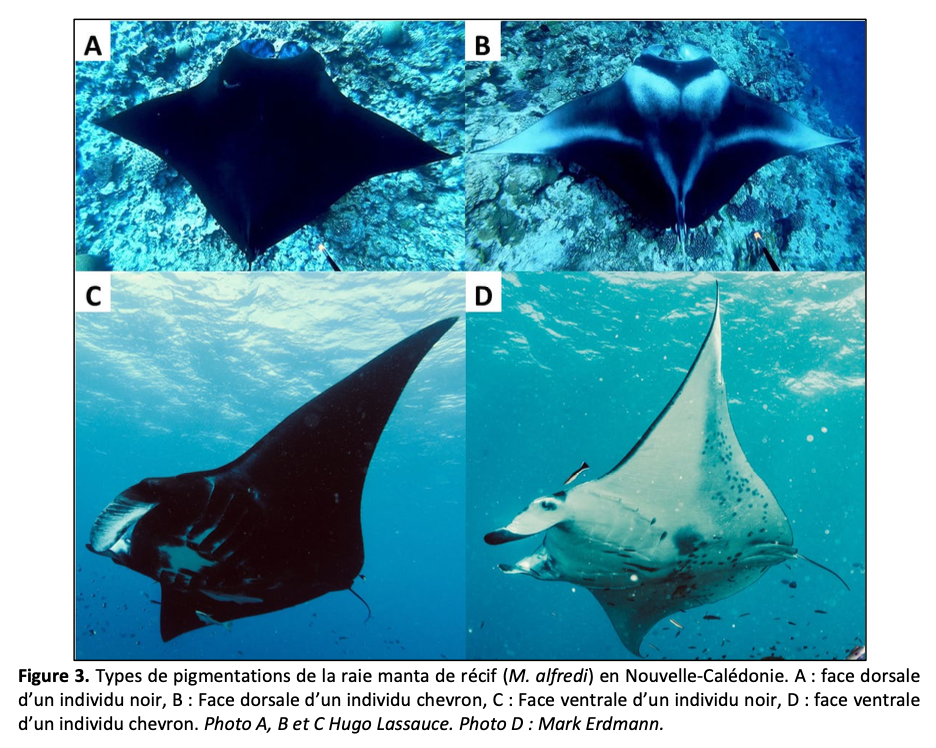
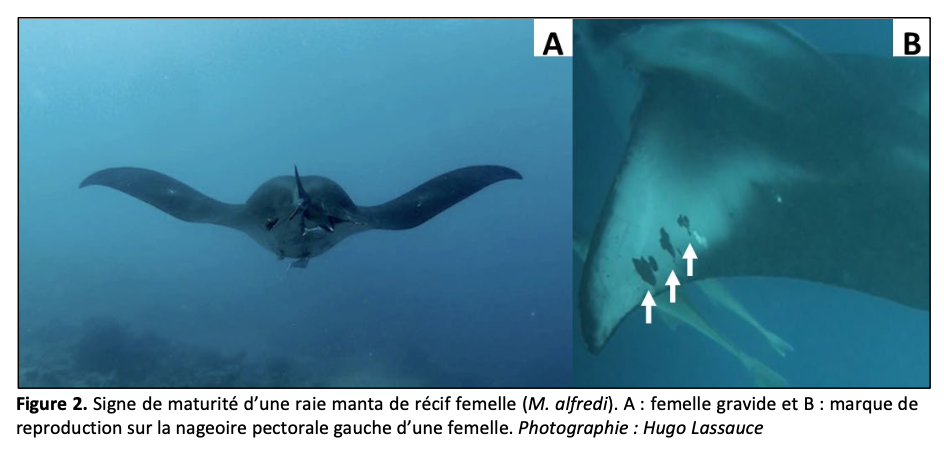
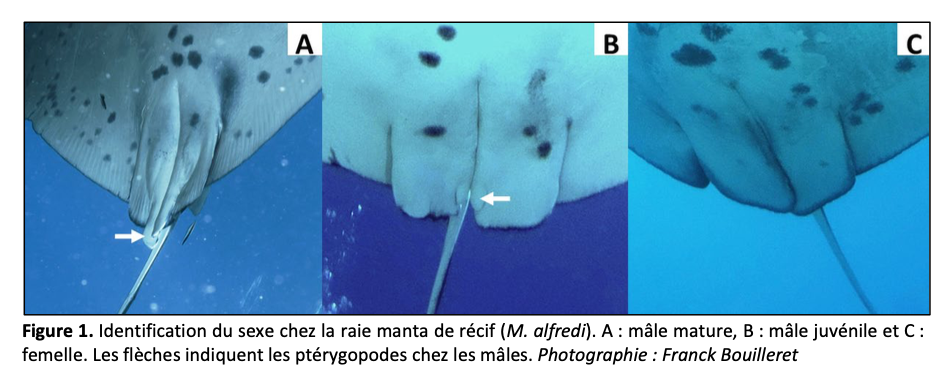
Summary: This thesis investigates the reef manta ray population in New Caledonia, a species of global significance but poorly studied in this region. Combining citizen science, satellite telemetry, and genomics, the research gathered 1741 photo-identifications, estimated abundance, and studied habitat use and injuries. Satellite tags provided insights into horizontal and vertical movements. Genetic analysis revealed regional and local genetic structure. These findings inform conservation measures to address present and future threats to the species.
Abstract
“Emblematic and threatened species distributed in the tropical and subtropical regions throughout the world, the reef manta ray is also represented in New Caledonia. The population of the archipelago has yet never been studied before and the understanding on the biology, ecology, populations dynamics and movements of the species remain globally limited. The acquisition of a knowledge of reference is essential for the conservation of the species. This thesis aims to describe the population, its structure, and the spatial ecology of reef manta rays of New Caledonia using diverse approaches combining citizen science, satellite telemetry, and genomic. A five-year monitoring allowed the collection of 1741 photo-identifications of manta rays from 11 sites distributed around the archipelago revealing the characteristics and the distribution of the population, an estimation of the abondance and a first insight into its habitat use and the potential source of injuries. The deployment of 21 satellite tags at three study sites recorded detailed data on horizontal movements and the vertical behaviour. Finally, the use of genome-wide single nucleotide polymorphisms (SNPs) discovered from of 92 samples, including 73 from four sites around New Caledonia and 19 from two sites on the east coast of Australia, revealed the existence of genetic structure at regional and local scales. The results presented in this thesis provide the first data on the population of reef manta rays of New Caledonia and suggest precautions and measures that should be considered to evaluate and mitigate the potential present and future disturbances.”
About The Author - Dr. Hugo Lassauce
Born in New Caledonia, Hugo was raised in a place where everything is about nature. He can’t remember when his fascination for marine life started; it feels like he grew up with his head underwater exploring the reef every time he got the chance. However, Hugo did not realise how important his relationship with the sea was until he moved to France for his Bachelor Degree in Biology in 2009 and decided to dedicate his life to help and contribute to the conservation of the natural beauty of the reefs back home.
In 2013 Hugo enrolled in a Master Degree in Marine Biology at James Cook University, in Australia. He then spent 2 years learning English and everything about marine ecosystems. While he thought he had seen a lot of amazing things underwater, it was during a field trip to the Great Barrier Reef that he saw a manta ray for the first time!
Hugo finally returned home in 2016 with his degrees, a little bit of experience and a lot of motivation. Seeing the world made him realise how privileged the context of New Caledonia is, and thus how important it was to do everything to protect it. He decided to start a PhD, which he has since completed, as the basis for a whole conservation project on the emblematic yet mysterious mantas. He contacted The Manta Trust and started to help create the Manta Initiative in New Caledonia!
Working with The Manta Trust is an amazing opportunity to collaborate with passionate people who strive for the same goal of understanding and protecting manta rays, whilst raising awareness on conservation and protection of whole ecosystems. He is really excited about getting this project moving forward to contribute to the conservation of his country’s exceptional marine biodiversity.
Read more about the affiliate project: INITIATIVE MANTA EN NOUVELLE-CALÉDONIE

